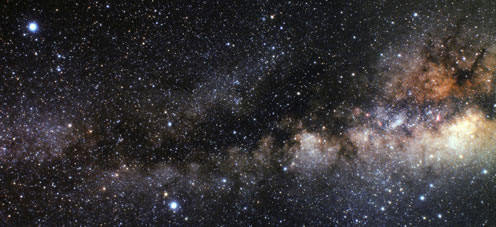
Size comparison of a dwarf galaxy (right inset, bottom) with a larger galaxy in the centre. Top inset: Dwarf galaxy overlain with some of the MaNGA data, revealing the winds from the supermassive black hole. Credit: Samantha Penny (Institute of Cosmology and Gravitation, University of Portsmouth) and the SDSS collaboration
Scientists have solved a cosmic mystery by finding evidence that supermassive black holes prevent stars forming in some smaller galaxies. These giant black holes are over a million times more massive than the sun and sit in the centre of galaxies sending out powerful winds that quench the star-making process...
Read More








Recent Comments